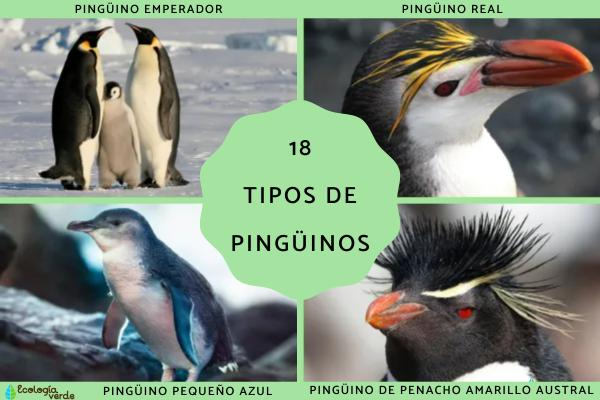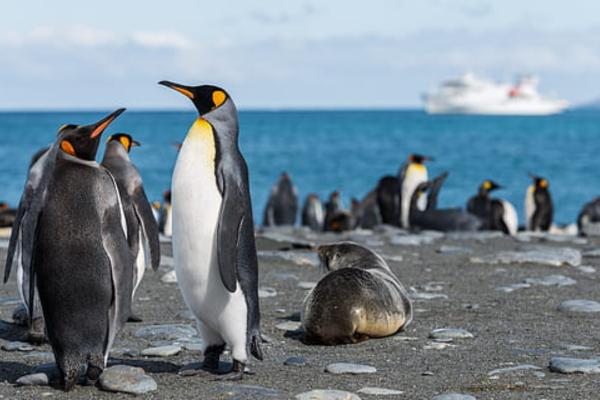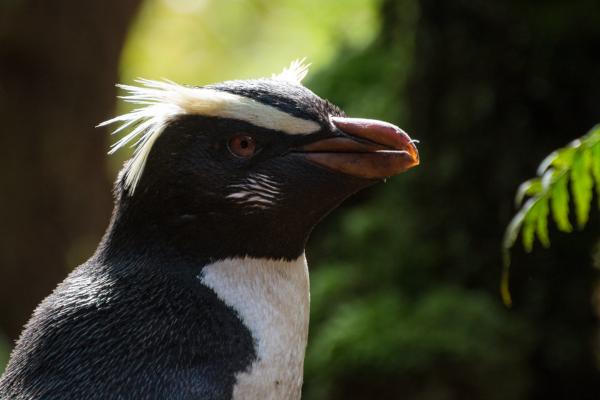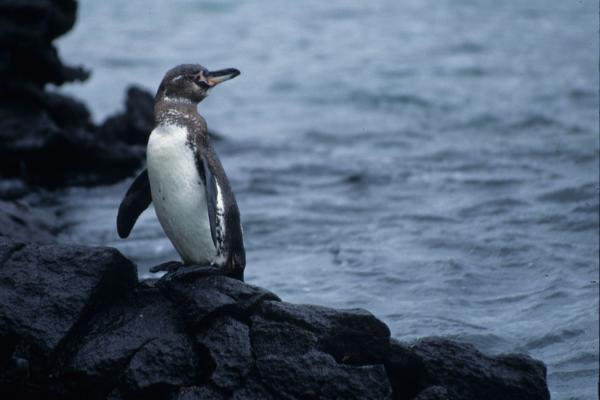Penguins are among the most iconic birds on Earth. Though they may appear clumsy on land and lack the ability to fly, penguins are elite swimmers and divers of the ocean world. Their streamlined bodies allow them to glide gracefully underwater, while their feet and tails act as rudders. Waterproof feathers and a thick layer of blubber help them survive in cold marine environments, making them true aquatic birds.
Currently, there are 18 recognized species of penguins, and all but one live exclusively in the Southern Hemisphere. In this article, we’ll explore the most fascinating types of penguins, including their physical traits, natural habitats, and conservation concerns.

The largest penguin species, reaching up to 40 kg.
Native to Antarctica, and the only species that breeds during the harsh Antarctic winter.
Males incubate the eggs while females forage.
Climate change is causing a projected decline in their population.

Second-largest penguin after the emperor.
Found on sub-Antarctic islands, such as South Georgia.
Lays a single egg that is incubated on their feet, not in a nest.
Features orange patches near the ears and on the lower beak.

Identified by yellow-orange eyebrow-like crests that meet at the forehead.
Facial feathers are white, unlike the black-faced macaroni penguin.
Endemic to Macquarie Island; migratory movements extend to Australia and New Zealand.
Dives up to 200 meters to hunt for food.

Named for its flashy orange crest feathers.
Among the most numerous penguin species.
Inhabits islands near the Antarctic Convergence Zone.

Has separate yellow crests that don’t join in the middle.
Spends around 80% of its life at sea, proven to travel over 7,000 km in two months.
Breeds in the dense coastal forests of southwestern New Zealand.
Recognizable for their long, spiky yellow-black crests.
Found on the Falkland Islands and other sub-Antarctic islands.
Extremely social but also among the most aggressive penguins.
Listed as vulnerable due to a 30% population decline over the last 30 years.
Closely related to the southern rockhopper.
Found in Tristan da Cunha and Gough Islands.
Listed as critically endangered by the IUCN.
Native to the Antarctic coastline.
Travels in groups to breed on ice-free beaches.
Stands about 60 cm tall; leopard seals are their main predator.
Also known as the "Juanito penguin."
Recognized by a bright orange beak and white cap on the head.
Fastest swimming penguin species at up to 36 km/h.
Lives in sub-Antarctic islands and parts of the Antarctic Peninsula.
Native to the coasts of Peru and northern Chile.
Recognizable by the white line from the eye to the throat.
Nests in guano deposits, which were heavily exploited.
Vulnerable due to habitat disturbance and tourism.
The only penguin native to Africa, living on the rocky coasts of South Africa and Namibia.
Features a pink skin patch above the eye for thermoregulation.
Population decline linked to egg harvesting, nest destruction, and marine pollution.
Named after explorer Ferdinand Magellan.
Found along the southern coasts of Chile, Argentina, and the Falklands.
Digs burrows up to 1 meter deep to build nests and protect chicks.
The only penguin species living north of the equator, restricted to the Galápagos Islands.
Marked by a white semi-circular band from the eye to the throat.
Endangered due to human activity and El Niño climate disruptions.
Endemic to New Zealand’s Snares Islands.
Distinctive for its light yellow eyebrow crests and compact body.
Breeds in dense coastal forests, often in large, noisy colonies.
Lives exclusively on Antipodes Islands, south of New Zealand.
Shy and elusive; listed as vulnerable due to its small, isolated population.
One of the rarest penguin species in the world.
Named for the yellow ring around its eyes.
Lives on New Zealand’s South Island; population threatened by habitat loss and invasive predators.
The smallest penguin, standing only about 30 cm tall.
Feathers are bluish-gray; has blue-colored eyes.
Found on the southern coast of Australia and New Zealand.
Protected in some areas by trained dogs guarding nesting sites from foxes.
Named for the narrow black band under its chin.
Lives on Antarctic coasts, islands, and drifting icebergs.
Builds nests by arranging stones into circular mounds.
From the icy shores of Antarctica to the tropical Galápagos Islands, penguins have adapted to a wide range of environments. While some species thrive, others face significant threats from climate change, pollution, tourism, and habitat loss.
Understanding the different types of penguins and their unique adaptations is the first step toward protecting them. Let’s work together to ensure these amazing birds continue to waddle and swim across our planet for generations to come.
animal tags: Penguins
We created this article in conjunction with AI technology, then made sure it was fact-checked and edited by a Animals Top editor.